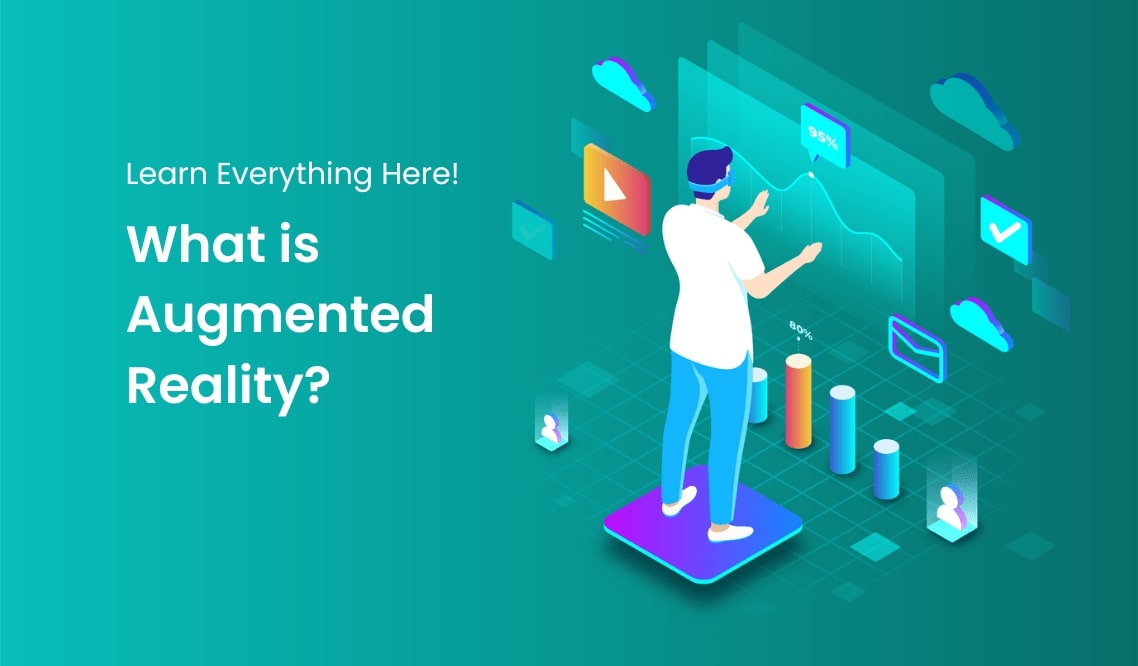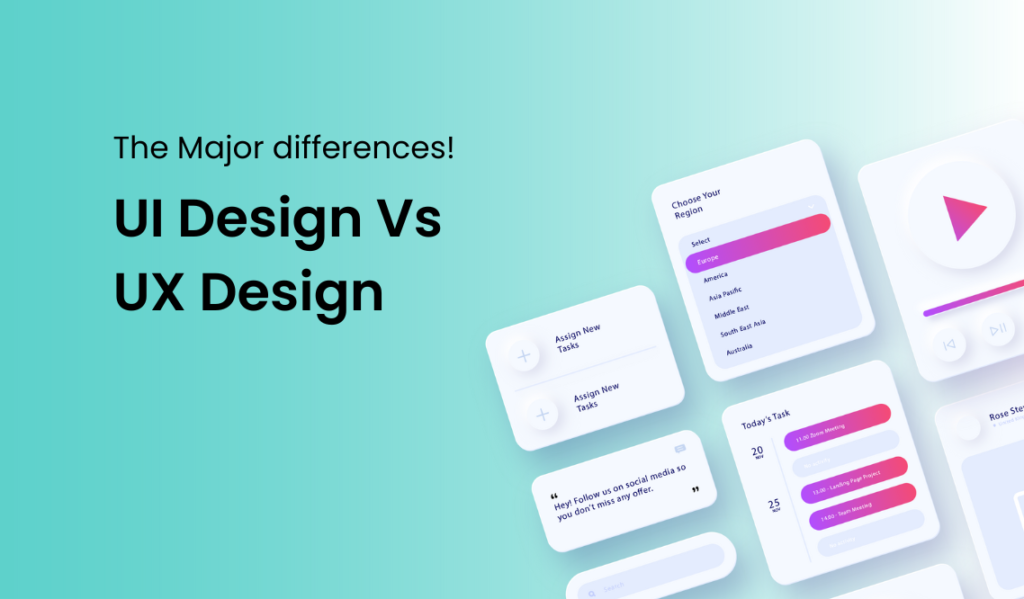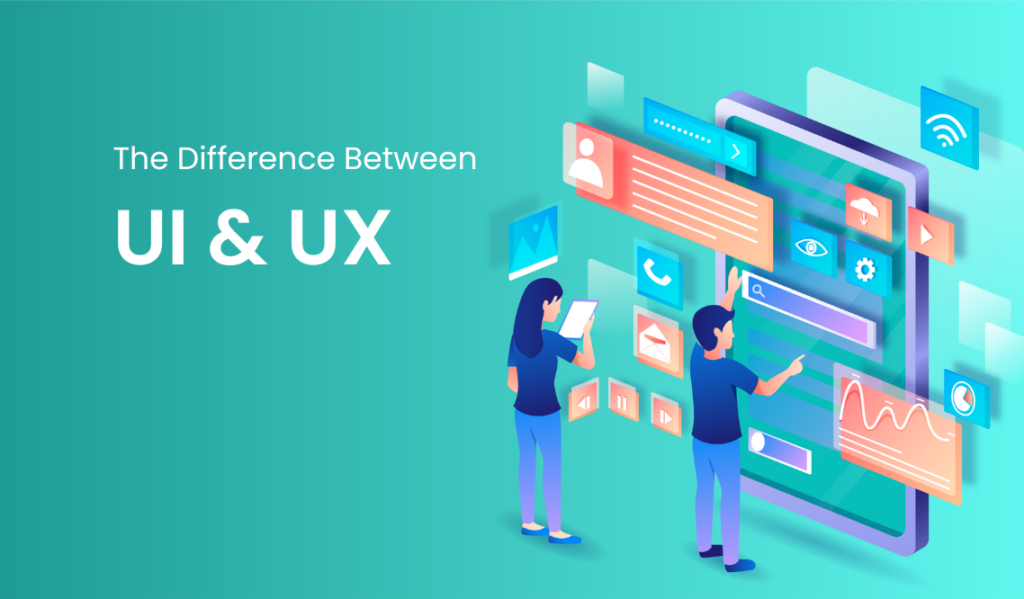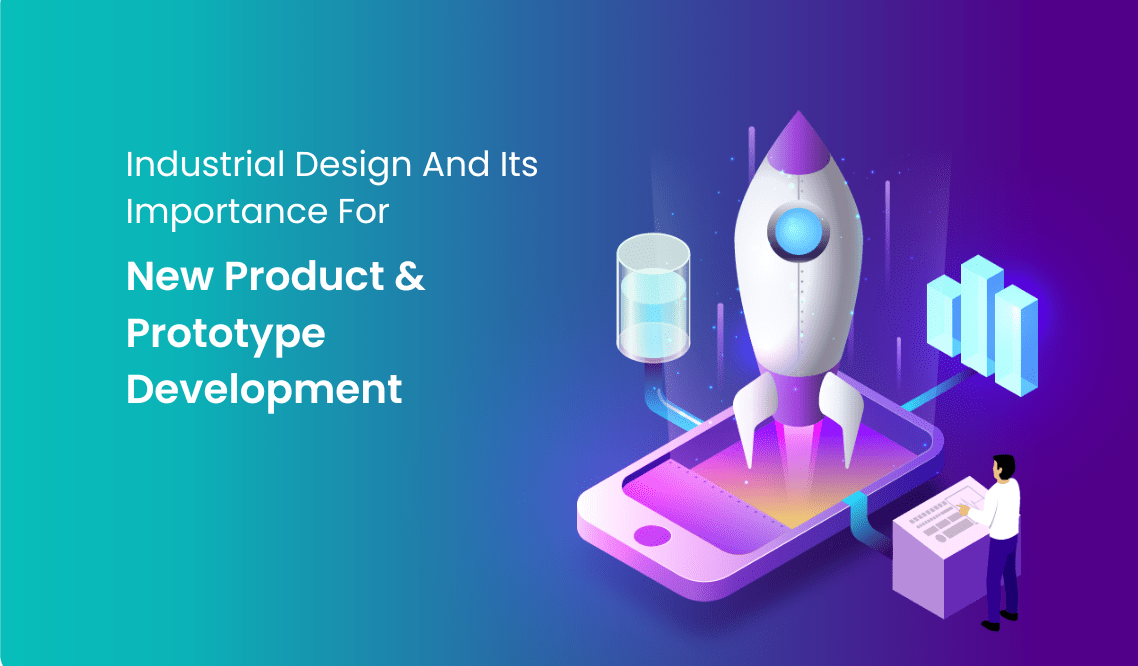Augmented reality is here to stay, whether you enjoy online shopping, applying Snapchat effects to your face, or determining how an item of IKEA furniture will work in your home.
By 2030, it is predicted that applications for augmented reality (AR) and virtual reality (VR) could enhance the world economy by £1.4 trillion.
Virtual reality (VR) or augmented reality (AR) has been used by 56% of businesses in some capacity, and 35% are contemplating it.
The market is utilizing this cutting-edge innovation to comprehend its potential while researching and developing the basics of augmented reality technology.
Learn more about what is augmented reality, what types of augmented Reality are, and how augmented really works.
What is Augmented Reality?
Augmented reality (AR) is a technology that allows you to see your real-world surroundings while adding a digital augmentation overlay of pictures, sounds, or text that reinforces your reality.
It is a technologically enhanced representation of the real physical world that uses digital visual elements, music, or other sensory stimuli. Businesses specifically engaged in mobile computing and business applications are noticing a growing tendency in this direction.
One of the main objectives of augmented reality apps, in the midst of the growth of data collection and analysis, is to draw attention to particular aspects of the real world, foster comprehension, and produce clever and approachable insight that can be used in practical contexts. It can assist businesses in making decisions and provide insight into customer spending patterns.
Types of Augmented Reality!

Check out the following types of Augmented Reality:-
Market-based AR
Marker-based AR apps place digital content on top of specific physical pictures, referred to as markers, that are detected by the camera. A marker could be a physical thing or a visual, like a logo, a placard, or a QR code. The business card serves as a marker for the augmented reality app development, which shows more digital content when it comes into contact with the card.
Markerless Augmented Reality
One of the most commonly used uses in the field is markerless augmented reality. Because location-detecting characteristics in smartphones are so readily available, it is also referred to as location-based AR.
Most users of this kind of software are travelers. Aside from that, it assists users in discovering interesting places within their present location.
This technique reads information from the mobile device’s GPS, digital compass, and accelerometer while anticipating the user’s point of concentration. The main goal of this AR is to display location data regarding items that can be seen through the user’s camera on the screen.
Projection-based AR
Projections-based augmented reality development feels more alluring and authentic, just like anything else that is out of our grasp. By virtue of its name, projection-based AR uses projection onto objects to perform its tasks.
You can create an airborne fortress or a dialer with projection-based augmented reality. Noninteractive AR approaches are one of the widely used projection-based methods. It is possible to generate a false impression of an object’s position, orientation, and depth by projecting images onto it.
Superimposition Augmented Reality
Superimposition-based augmented reality app development is among the popular types of Augmented reality used to overlay digital content on top of the real-world environment. This technique involves detecting real-world objects or images and then using them as markers to place virtual objects or information onto the screen of a mobile device or a smart glasses display.
One of the most common applications of superimposition-based AR is in gaming. For example, the popular mobile game Pokemon Go uses this technique to superimpose virtual creatures onto a real-world environment.
Superimposition-based AR is also used in a variety of other industries, such as education, retail, and tourism.
How does Augmented Reality actually work?

- The first step in the process of AR is to recognize and understand the real-world environment. This is done using cameras, sensors, and GPS to identify the user’s location, as well as any objects or images in the user’s field of view. The software then processes this information to create a 3D model of the environment.
- The second step involves overlaying digital content in the real-world environment. This is done by using the 3D model created in the first step to place virtual objects or information in the user’s field of view. This content can be static or dynamic and can include anything from images and videos to text and 3D models.
- The final step in the process is to render the augmented reality app content onto the user’s screen. This involves using the device’s display, such as a smartphone or AR headset, to show the user the augmented content in real-time. The content is superimposed onto the real-world environment in a way that makes it appear as if it is part of the user’s surroundings.
Ar vs VR vs MR vs XR
AR, VR, MR, and XR are all related technologies that offer different levels of immersion and interaction with virtual content. While AR and VR offer unique experiences, MR and XR bridge the gap between the real world and virtual content, offering new and exciting ways to interact with digital environments.
Let’s know more about the differences!
- Augmented Reality (AR): AR overlays digital content in the real-world environment. This technology allows users to see and interact with virtual objects in the real world.
- Virtual Reality (VR): VR creates a fully immersive digital environment that completely replaces the real world. It uses a headset or other devices to create a completely simulated environment where users can interact with digital objects and environments.
- Mixed Reality (MR): MR combines both the real world and virtual content to create a new environment where digital objects and the physical world interact with each other. MR offers a more immersive experience than AR, as virtual objects can be anchored to the real world, and users can interact with them in a more natural way.
- Extended Reality (XR): XR encompasses all of the above technologies. It refers to any experience that combines the real world and virtual content, including AR, VR, and MR.
Bottom Line
In conclusion, augmented reality development is a groundbreaking technology that merges the digital and physical worlds, offering endless possibilities for innovation and creativity. AR applications are becoming more accessible and affordable, enabling various industries to leverage their benefits in improving user experience, enhancing learning, and increasing engagement.
From interactive gaming to immersive education, AR provides a unique and engaging experience that has the potential to transform the way we interact with technology and the world around us.
As technology continues to evolve, we can expect to see even more exciting and innovative uses of AR in the future.
If you are looking forward to leveraging this technology, you can reach out to professionals at Kaalo. Our team will understand your needs and design a tech-driven solution.






